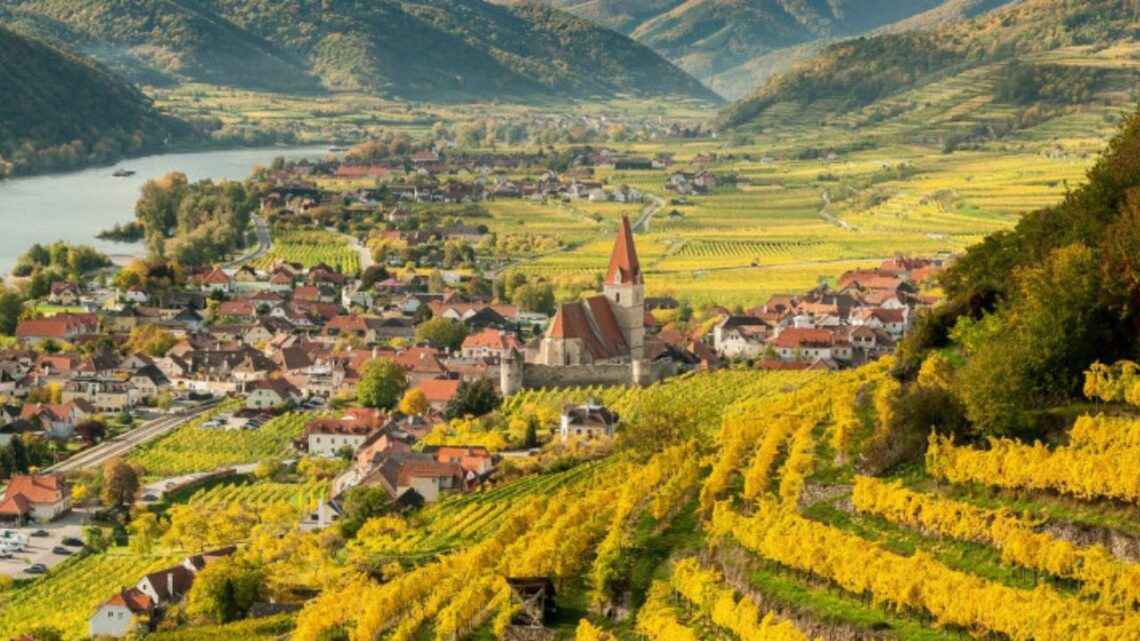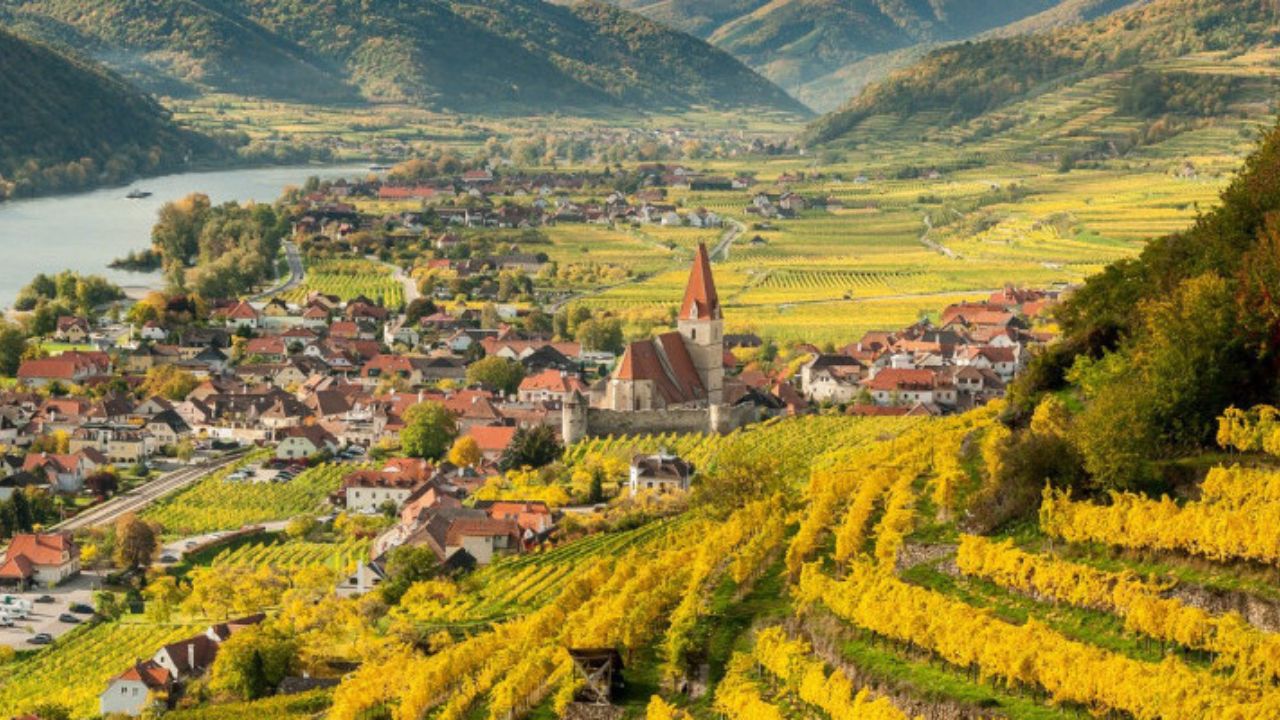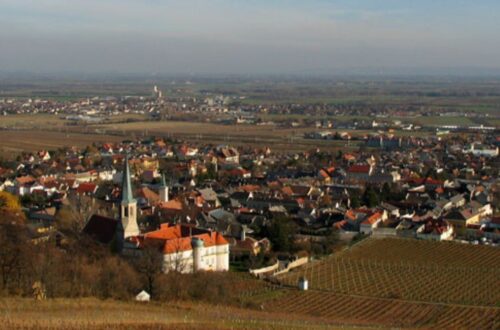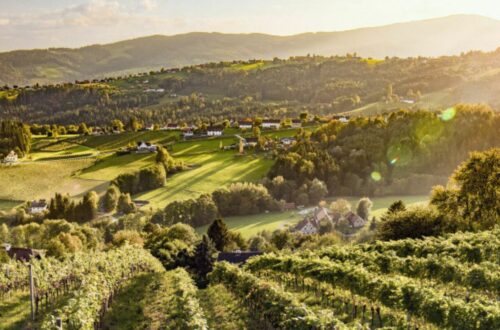
Traisental wine
Traisental is an Austrian wine region with a rich history spanning over 500 years! The vineyards cover more than 1,500 acres. With over 50 vineyards contributing to the production of over 10 million bottles of wine, Traisental has established itself as a prominent wine-producing area.
Visitors to Austria can explore the charming small towns within Traisental, such as Traismauer, which offer captivating glimpses into the rich history of the region.
Ditch the crowds and raise a glass in Austria’s Traisen Valley! Wine lovers will find a historic paradise (dating back to the Bronze Age!), with unique terroir shaping delicious grapes. Grüner Veltliner reigns supreme, while Riesling thrives on specific soils, known for its robust character. The Traisental DAC ensures quality, and charming villages add to the allure. This valley beckons outdoor enthusiasts and culture seekers too – a place where stunning scenery meets delicious wines and unexpected discoveries!
The Traisen Valley
The Traisen Valley is a popular tourist destination for wine lovers, hikers, cyclists, and those seeking cultural experiences. The discovery of grape seeds dating back to the early Bronze Age which confirms the region’s long-standing winemaking tradition. It came before the Roman!
Terroir in the Traisen valley: soil and climate
The most striking geological feature in the Traisental region is the coarse limestone and dolomitic gravel brought by the ancient Traisen River carried here approximately 16 million years ago from the Alps.
These gravels are mainly consolidated into conglomerates and extend particularly on the heights of the western slopes of the valley. Such soils add a significant level of freshness to the wines
On the right side of the valley, the soil is referred to as the “Traisental Formation.”. These are limestone sands, more or less loamy and sometimes slightly solidified, in which the marine shell “Oncophora” is abundant.
Compared to Kamptal and Kremstal, Traisental receives relatively higher rainfall. However, the winds blow in a northward direction up the valley from the Alps, aiding in the drying process of the grapes after rainfall.
To avoid frost and botrytis, vineyards are often trained at higher elevations. Fortunately, the constant breeze in the region prevents the development of botrytis.
However, just like their neighbours, the two sisters, Kamptal and Kremstal, they are influenced by both the hot Pannonian climate and the cold winds from the Alps. This results in hot days and cool nights, creating delicate aromas and a spicy finesse in the wines.
The nearby regional capital of Lower Austria, St. Pölten, offers a diverse and modern cultural program. From this southernmost point of the wine-growing area, many paths lead to idyllic wine villages with typical farm inns, such as Statzendorf, Unterwölbling, Oberwölbling, Nußdorf, Reichersdorf, Getzersdorf, Inzersdorf, Stollhofen, Frauendorf, and Gemeinlebarn.
Grape varieties in Traisental
The big winner here is Grüner Veltliner as dominant as in Traisental. It accounts for nearly 60% of the vineyards!
However, Riesling is also considered a specialty of the Traisen Valley. The vineyards are mainly located on small terraces with dry, highly calcareous, and gravelly soils.
These soils give the wines a unique mineral profile with a robust body and a solid foundation for aging.
Traisental DAC
Traisental adopted its DAC (Districtus Austriae Controllatus) classification in 2006, adhering to the same regulations as Kremstal and Kamptal.
Wineries in Traisental
Here are a few of my favourite wineries in Traisental!

Leopold Figl took over winemaking duties in 2012 after working at Stadt Krems in Kremstal. He specializes in Grüner Veltliner as well, and his vineyards have sandy loess soils, resulting in full-bodied wines with higher alcohol content. His sparkling is quite a treat!
Markus Huber, on the other hand, took over the estate in 1999 when it was a mere 5 hectares. Since then, he has expanded it to 55 hectares, spread across more than a hundred plots. His top wines receive minimal skin contact, undergo fermentation in neutral Austrian acacia casks, and age on lees for 9 months.
Ludwig Neumayer runs a top-notch estate and comes from a traditional family farming background. Despite being a small winery, they produce many wines that are of exceptional quality. Neumayer is particularly renowned for two wines: “Wein vom Stein,” a blend sourced from different sites sharing extremely stony soils, and “IKON,” a selection from the estate’s best parcels known for their impressive aging potential.
Conclusion : Traisental wine
The Traisen Valley in Austria is a popular destination for wine enthusiasts, nature lovers, and those interested in culture. With a winemaking tradition dating back to ancient times, the region is characterized by various soil types.
The dominant grape variety is Grüner Veltliner, accompanied by notable Riesling production.
The establishment of the DAC classification in 2006 aligns Traisental with Kremstal and Kamptal in terms of regulations.
Several exceptional wineries operate in the region, including those led by Leopold Figl, Markus Huber, and Ludwig Neumayer.
Leave a comment if you’re interested in tasting such wines!








One Comment
Franck MULARD
Very interesting!